Pad See Ew – the popular Thai stir fried noodles straight from the streets of Thailand made at home! While Pad Thai is sweeter and nuttier, Pad See Ew is salty, balanced with a touch of sour and a wonderful chargrilled flavour which you can create at home!
This is a reader-favourite recipe included by popular demand in my debut cookbook “Dinner”!

Pad See Ew
Pad See Ew, which means “stir fried soy sauce noodles”, is an extremely popular Thai street food meal and one of the most popular noodles dishes at Thai restaurants here in Australia.
Making a great Pad See Ew at home simply comes down to two things:
The right sauce. Basic recipes online will instruct you to use little more than just soy sauce and sugar. It takes a little more than that!
Caramelising the noodles – Getting a little caramelisation on the noodles makes all the difference between an “ok” and “wow, it’s JUST like you get at restaurants!”.
The trick? Remove the stir fry ingredients. Cook the noodles with sauce separately. Less stuff in the wok (or skillet) = easier to caramelise the noodles. At least, at home. If you’ve got a giant restaurant wok burner, you don’t need to do the noodles separately!
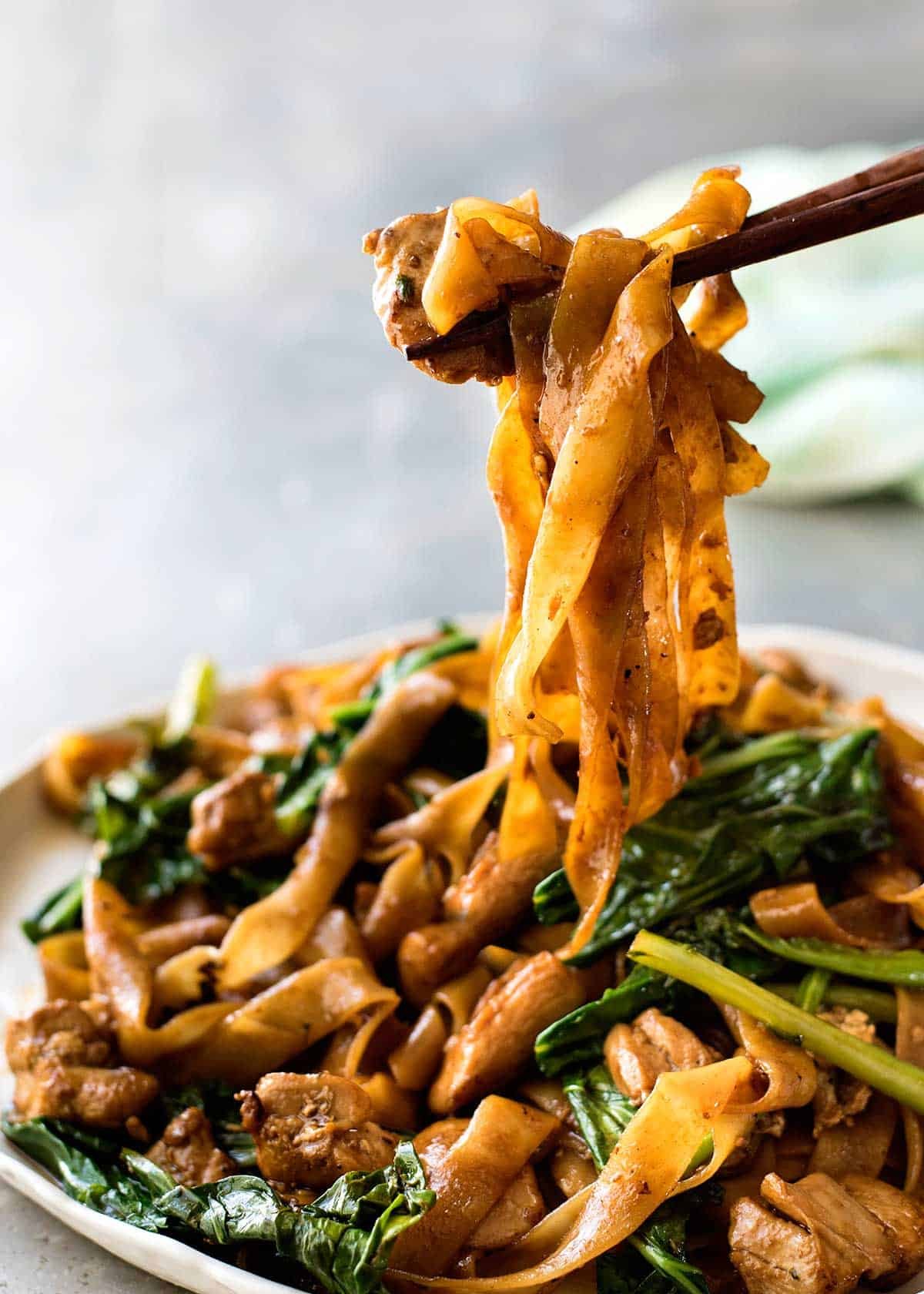
What goes in Pad See Ew
I can’t remember where I originally got the recipe from. Probably from David Thompson, the famous Australian chef who has dedicated his life to mastering the art of Thai cooking. I’ve made it so many times over the years, I can almost make it with my eyes closed. (Not really….but you know what I mean!)
So I had to actually measure the ingredients properly to share the recipe!
1. Pad See Ew Sauce ingredients
Pad See Ew has a sweet-savoury-touch-of-sour flavour, and this is made with a combination of the following ingredients:
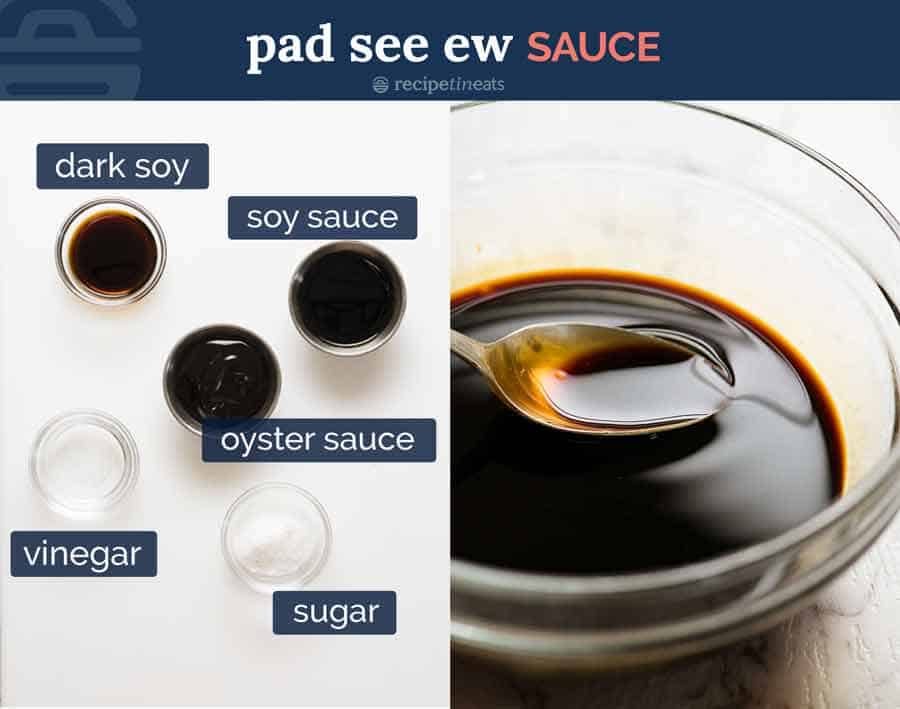
Dark soy sauce – For flavour and staining the noodles a dark brown.
Ordinary or light soy sauce – For seasoning (salt) and a bit of flavour. Most of the flavour comes from the oyster sauce and dark soy sauce. More on different soy sauces and when you can substitute with what in this About Soy Sauces post.
Oyster sauce – Key ingredient, it’s like 10 difference sauces mixed up in one bottle!
Vinegar – To balance the sweet and savoury. Some form of sour is a key ingredient in South East Asian cooking!
Sugar – For sweetness.
2. Pad See Ew ingredients
And here are the other ingredients for Pad See Ew:

Noodles – Pad See Ew is traditionally made with Sen Yai, which are wide, thin fresh rice noodles that are not easily accessible. Even most Asian stores in Sydney do not sell them – you usually need to go to a Thai grocery store.
So it is perfectly acceptable, and just as delicious, to make them with any wide flat rice noodles. I use dried rice noodles labelled as “Pad Thai” Rice Noodles (pictured below) because they are the widest available at the supermarket.
Once rehydrated, they’re essentially Sen Yai Noodles – just not quite as wide.
Chinese Broccoli / Gai Lan – This is a key authentic ingredient in Pad See Ew. Otherwise known as Gai Lan or Kai lan, it’s leafy and looks quite different to broccoli, but you’ll notice a similarity in the texture of the stems (hence the name).
If you can’t find it, just sub with other Asian greens, or a combination of broccoli or broccolini + spinach.
Chicken and egg – Feel free to use other proteins if you wish. But chicken is by far the most popular.
How to make Thai Stir Fried Noodles
Usually when making stir fried noodles, we toss everything together in one big pan or a wok.
But for Pad See Ew made at home, I do things differently to best replicate a restaurant flavour and minimise noodle breakage:
Cook chicken and vegetables first, then remove
Add noodles and sauce, toss to caramelise (just 15 seconds), then add chicken and vegetables back in.
Reason: A signature flavour in Pad See Ew is the caramelisation of the noodles. Restaurants and street vendors achieve this with super powered gas stoves with fiery heat that you’ll never find in a home kitchen. The only way to replicate that caramelisation on the noodles on a home kitchen stove is to declutter the wok and cook the noodles separately – the noodles will caramelise in 15 seconds.
The other reason is that rice noodles break if you toss them too much. Doing the two-stage toss makes it much easier and faster to disperse the sauce and bring the Pad See Ew together.
Trust me on this point. I’ve made a LOT of Pad See Ew at home in my time, and the two-stage toss it the easiest and most effective technique!

Garlic, chicken and Chinese broccoli STEMS first – Using either a wok or large skillet set over high heat, heat the oil then sauté the garlic until it goes light golden. Add the chicken then once it mostly changes from pink to white, add the Chinese broccoli stems which take longer to cook than the leafy part.
Once the chicken is cooked (it should only take 2 to 3 minutes), toss the Chinese broccoli leaves in and cook for 30 seconds or so just until wilted.
Push everything to the side to make room to scramble the eggs on the side. This is the traditional Thai way of scrambling eggs in Pad See Ew!
Crack egg straight into the wok.
Scramble egg – Then mix to scramble it. Speed is of the essence here – we want scrambled egg not a sunny side up egg!
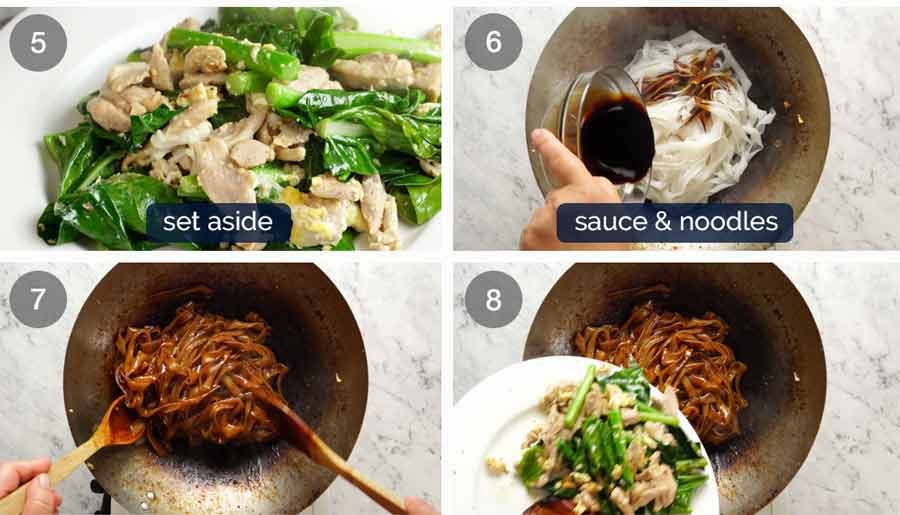
Empty wok – Remove the chicken and vegetables onto plate. As mentioned above, the best way to cook Pad See Ew at home is to cook the noodles separately so we can get some nice caramelisation on them. If we don’t do this, then the noodles just stew instead of caramelising.
Add noodles and sauce into the wok.
Toss quickly for 1 to 1 1/2 minutes until the sauce is dispersed throughout the noodles and you see some caramelisation on the edges.
PRO TIP: You want to be quick here because the longer and more you toss, the more noodle breakage you have. You’ll notice restaurants typically toss the noodles in the wok without using a wooden spoon or other tool for stirring – this too helps to minimise noodle breakage.
A note on Noodle Breakage – That said, you WILL get some noodle breakage, and that is normal / perfectly acceptable. Ever notice how the wide, flat noodles in Pad See Ew served at Thai restaurants are not long strands? That’s just the way it is. In fact, traditionally, Pad See Ew is served in Thailand with a FORK or spoon instead of noodles for ease of eating.
Add chicken and veg back in – Once the noodles are caramelised, add the chicken and vegetables back in. Give it a quick toss just to disperse, then serve!

As with all stir fries, once you start cooking, it moves very fast! So have everything prepared and ready to throw into the wok because there’s not time to be scrambling around the kitchen!
If you want to add a fresh side, try this Asian Slaw – it’s a great all rounder that goes with all Asian foods. – Nagi x
Watch how to make it
This recipe features in my debut cookbook Dinner. The book is mostly new recipes, but this is a reader favourite included by popular demand!
Hungry for more? Subscribe to my newsletter and follow along on Facebook, Pinterest and Instagram for all of the latest updates.
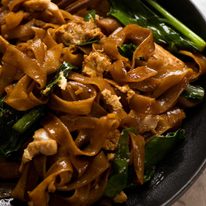
Pad See Ew – Thai Stir Fried Noodles
Ingredients
Noodles
- 200g / 7 oz dried wide rice stick noodles , or 15 oz / 450g fresh wide flat rice noodles (Sen Yai) (Note 1)
Sauce
- 2 tsp dark soy sauce (Note 2)
- 1 1/2 tbsp oyster sauce
- 1 tbsp light soy sauce (or all purpose, Note 3)
- 2 tsp white vinegar (plain white vinegar)
- 2 tsp sugar (any type)
Stir Fry
- 3 tbsp peanut or vegetable oil , separated
- 2 cloves garlic cloves, very finely chopped
- 1 cup / 150g / 5oz chicken thighs (boneless, skinless), sliced (Note 4)
- 1 large egg
- 4 stems Chinese broccoli (Note 5)
Instructions
Preparation:
- Chinese Broccoli – trim ends, cut into 7.5cm/3" pieces. Separate leaves from stems. Cut thick stems in half vertically so they're no wider than 0.8cm / 0.3" thick.
- Noodles – Prepare according to packet directions and drain. Time it so they’re cooked just before using – do not leave cooked rice noodles lying around, they break in the wok.
- Sauce – Mix ingredients until sugar dissolves.
Cooking:
- Heat oil: Heat 1 tbsp oil in a very large heavy based skillet or wok over high heat.
- Cook garlic and chicken: Add garlic, cook 15 seconds. Add chicken, cook until it mostly changes from pink to white.
- Chinese broccoli STEMS: Add Chinese broccoli stems, cook until chicken is almost cooked through.
- Chinese broccoli LEAVES: Add Chinese broccoli leaves, cook until just wilted.
- Scramble egg: Push everything to one side, crack egg in and scramble.
- REMOVE chicken from wok: Remove everything in the wok onto a plate (scrape wok clean).
- Caramelise noodles: Return wok to stove, heat 2 tbsp oil over high heat until it starts smoking (HOT is key!). Add noodles and Sauce. Toss as few times as possible to disperse Sauce and make edges of noodles caramelise – about 1 to 1 1/2 minutes.
- Add chicken back in: Quickly add chicken and veg back in, and toss to disperse. Serve immediately!
Recipe Notes:
Nutrition Information:
Originally published 2014, updated 2016. Updated over the course of the years with improved photos, the addition of ingredients and process photos as well as a recipe video. Recipe also updated with a more effective cooking method – cooking the ingredients in two batches. No change to ingredients, but yields a better caramelisation and easier to cook – read in post for explanation.
MORE THAI TAKEOUT FAVOURITES
Love noodles? Me too! See my entire Noodle recipes collection.
Life of Dozer
When Dozer ate a VERY spicy piece of chilli biltong!!

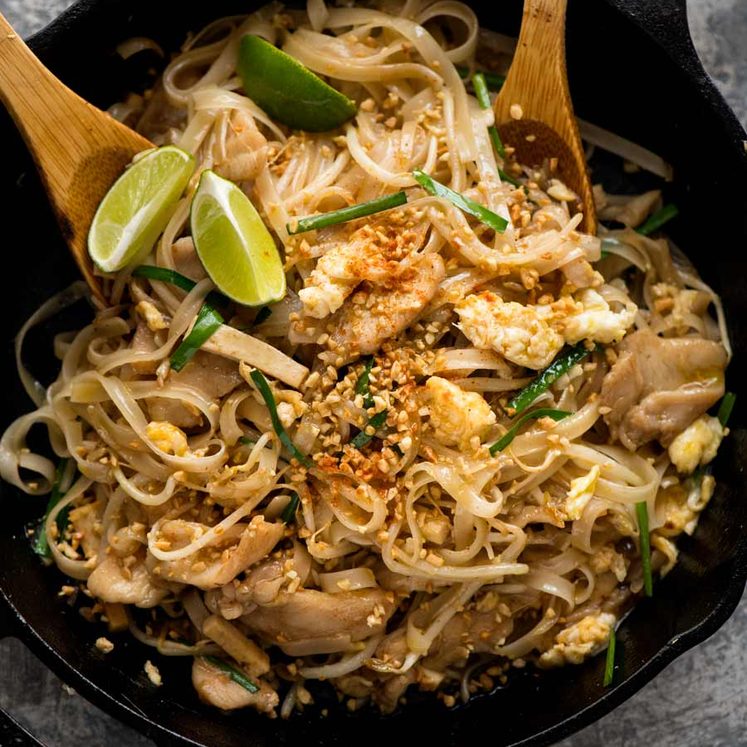
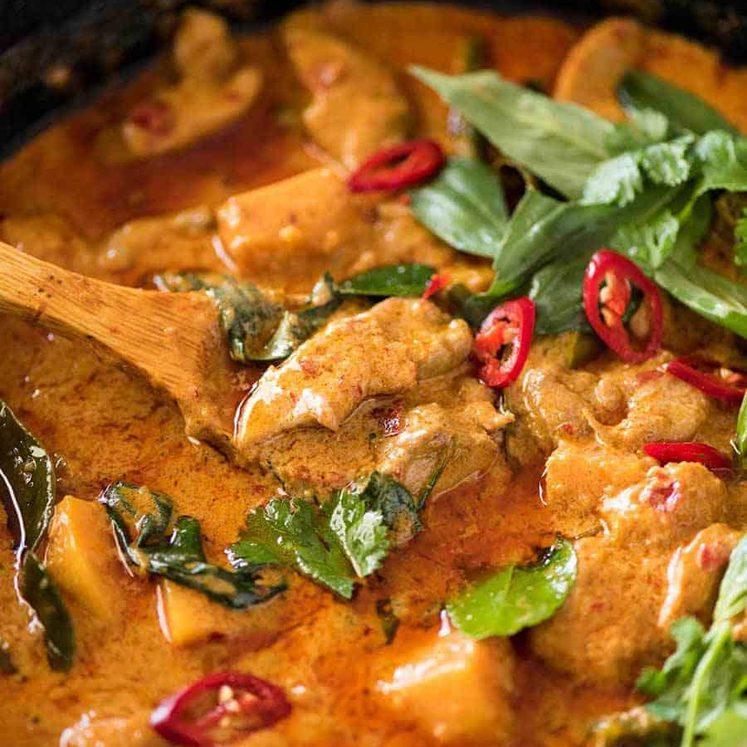
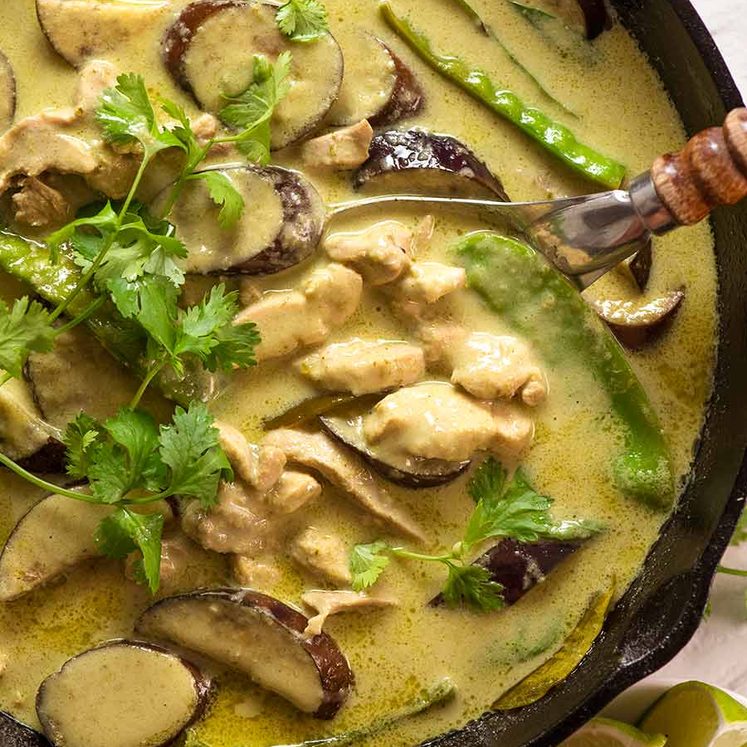

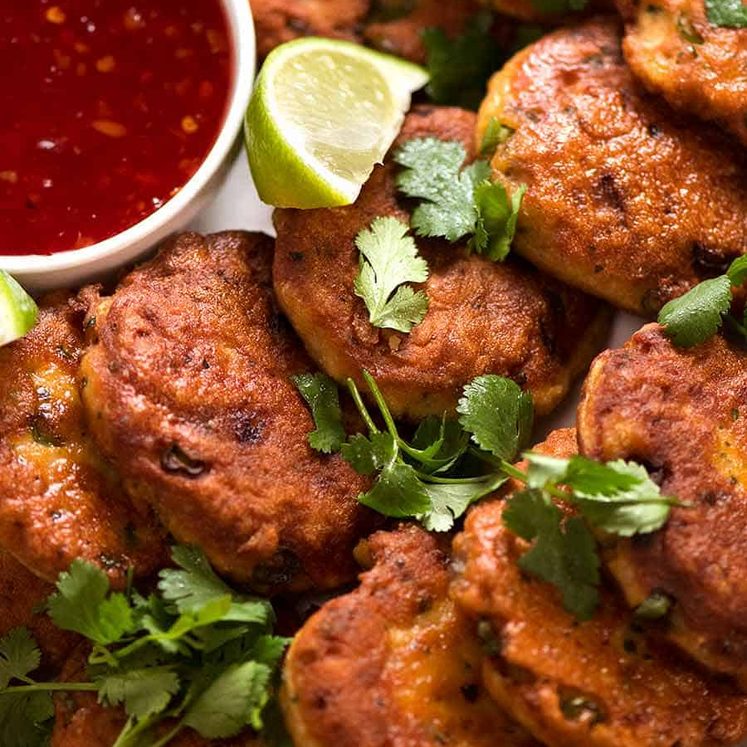
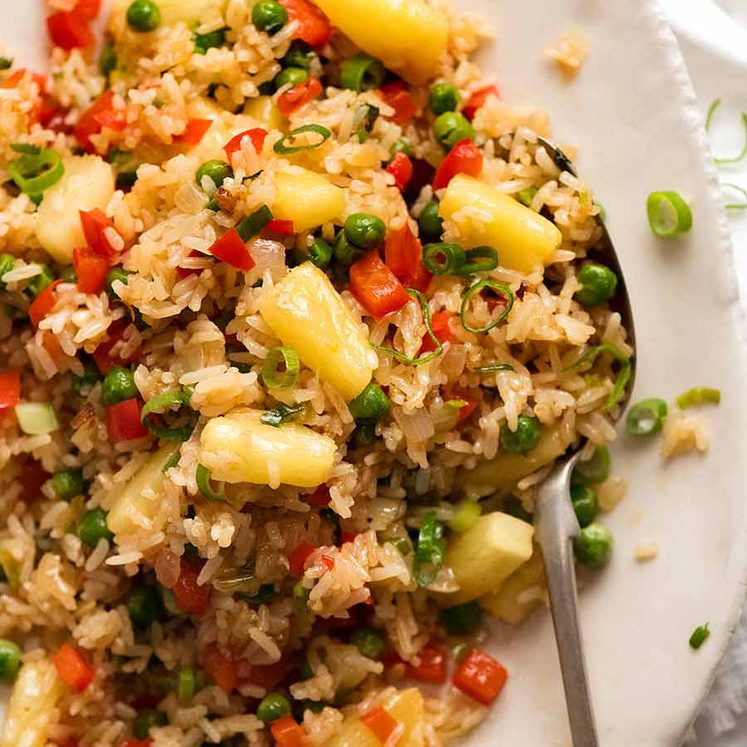
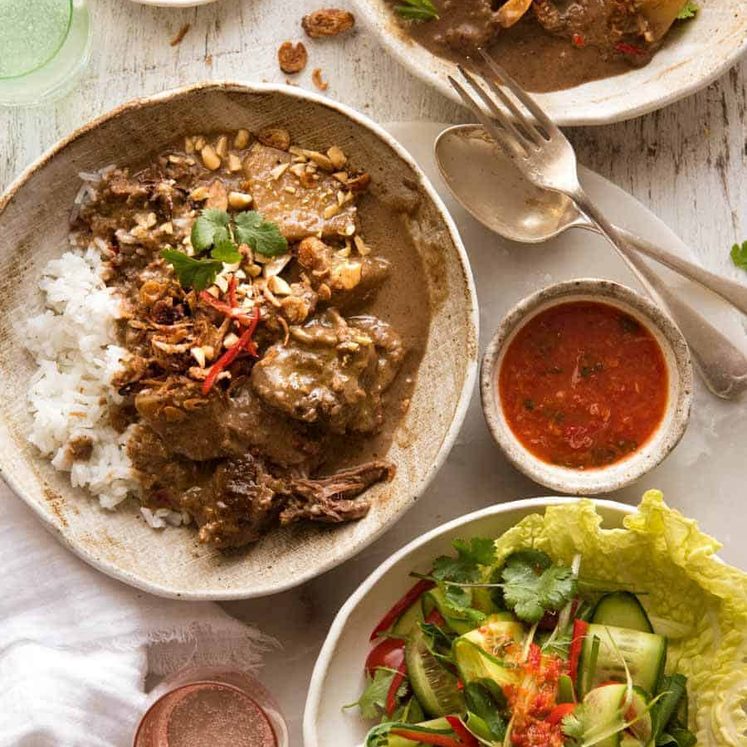

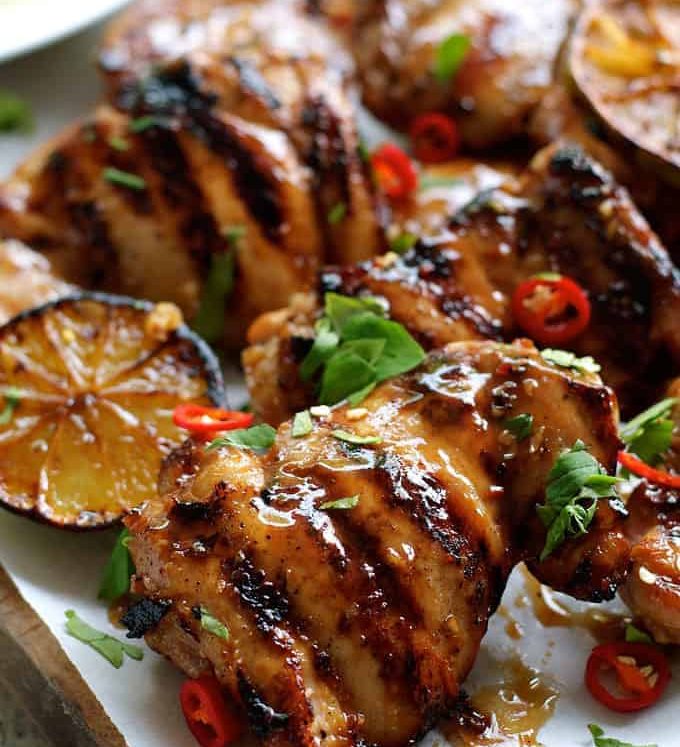
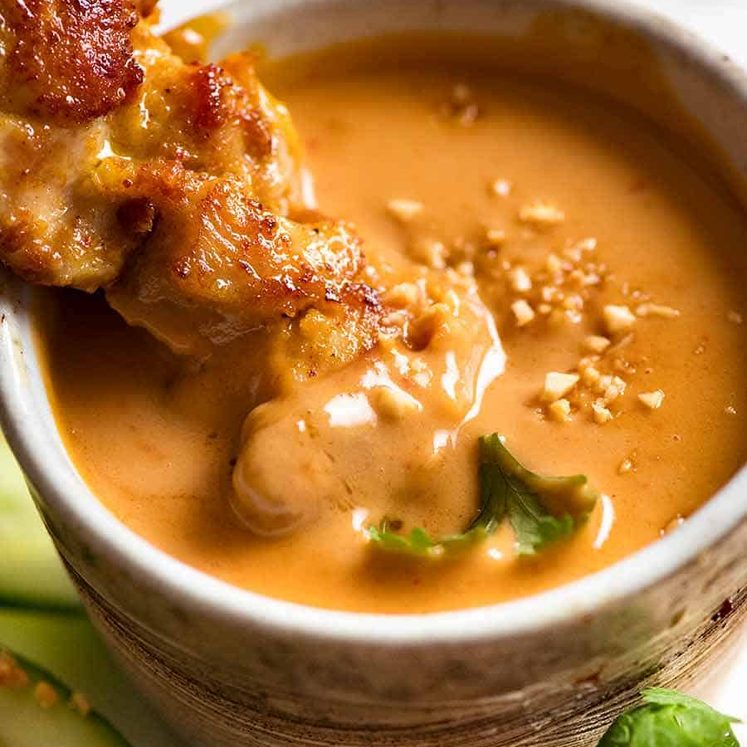
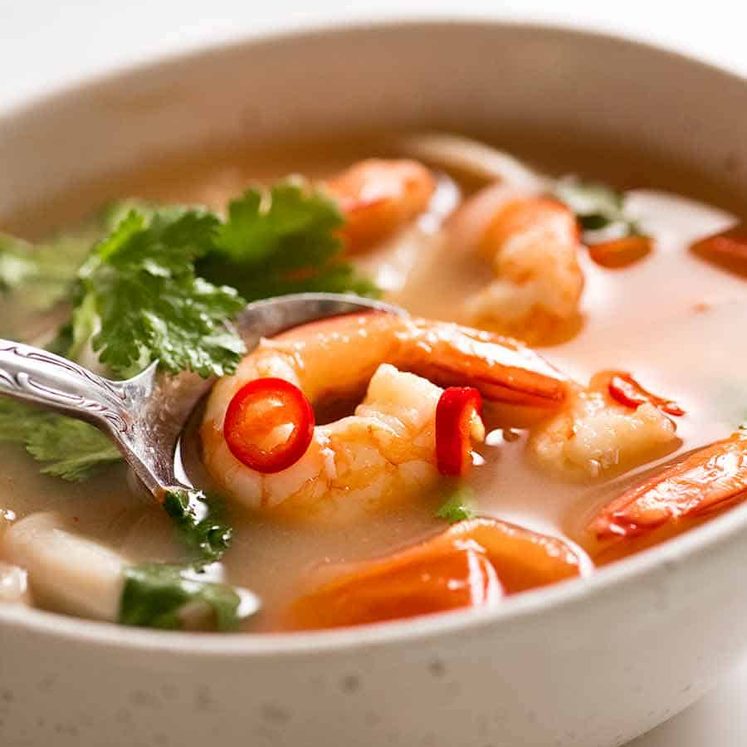
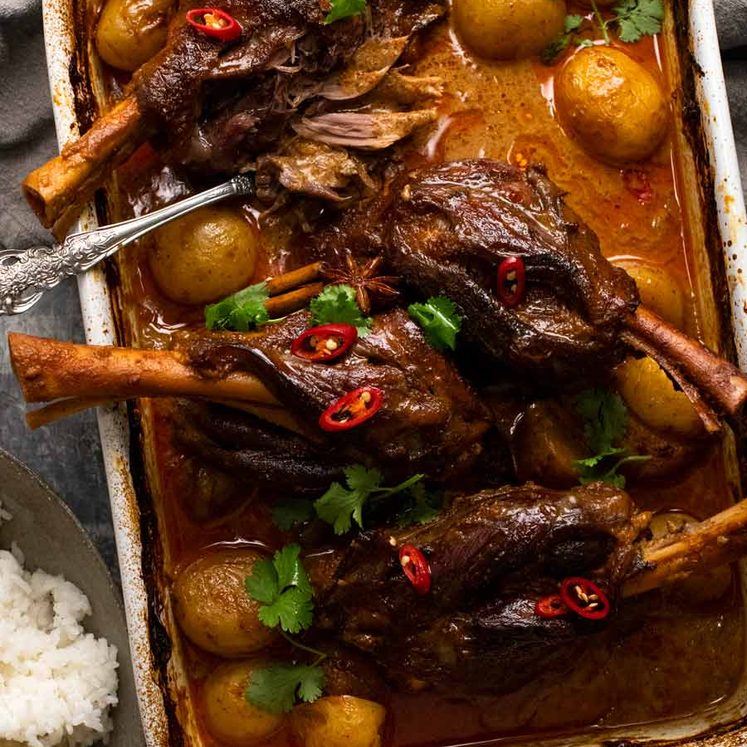
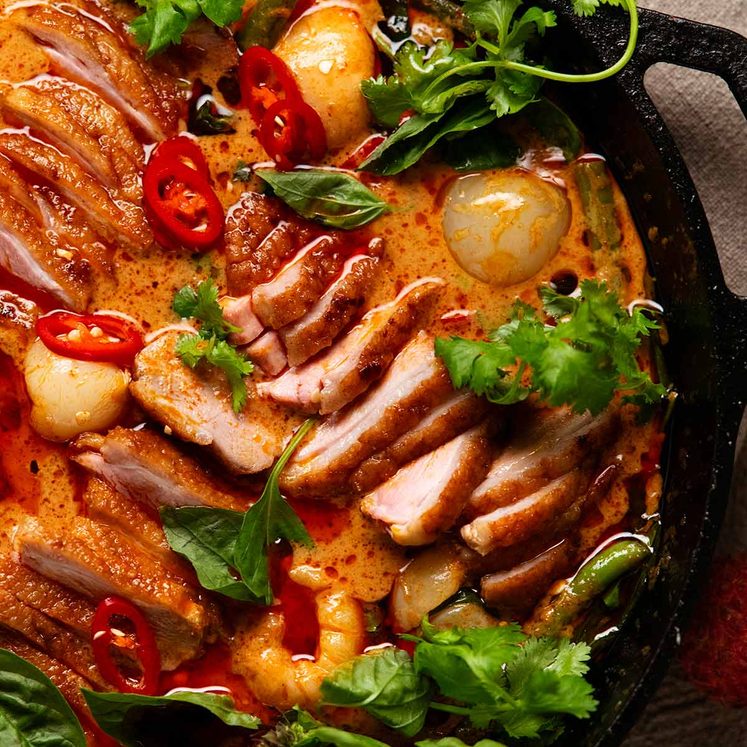
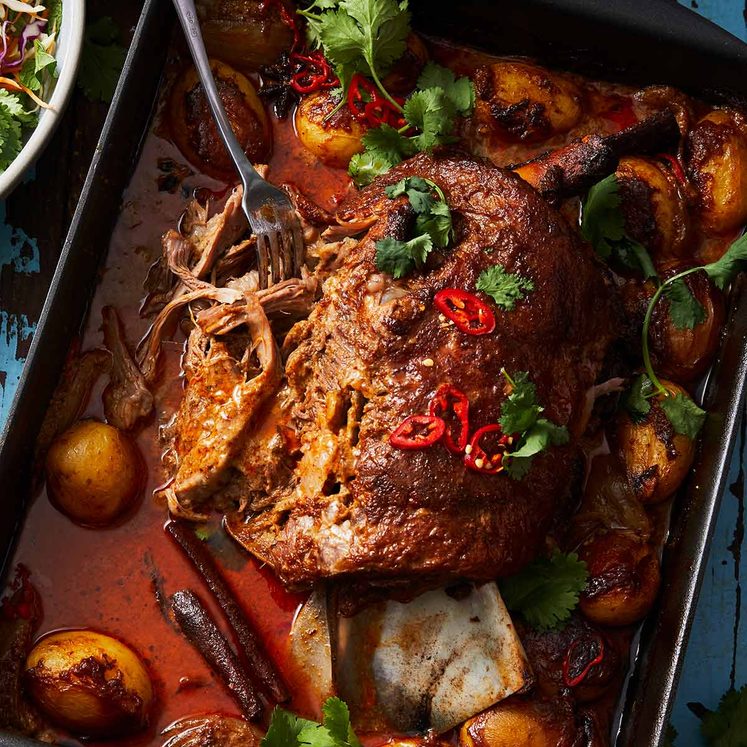
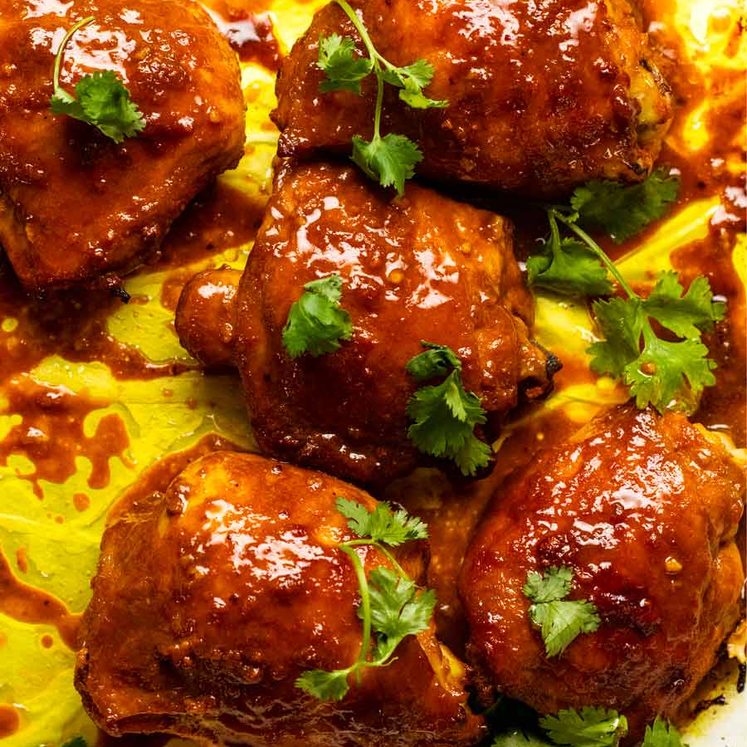
I am very excited to try this recipe. However, I do not have a wok. Because of closers, I am unsure if I can buy one and I don’t want to wait for one to ship. What kind of pan can I use instead? I have cast iron and Stainless Steel.
Hi Shelia, use the cast iron pan – it will hold more heat and be the closest to a wok – N x
Thank you! I am going to try it today!
Forgot to click the notify me via email so commenting with it checked to ensure I don’t miss your response. Thanks.
This was fantastic! Thank you for sharing this recipe. I had leftover tofu and pork and used regular broccoli florets. I also substituted tamari (regular and low sodium) for the soy sauce. Looking forward to trying many different proteins/veggies in this recipe! Definitely a keeper!
I have to eat gluten free, and have only run across the tamari as a soy sauce alternative. What would you recommend as far as amounts/other sauce alternatives?
Hi Emily, you can get gluten free oyster sauce as an alternative too! N x
10 STARS!!! This is just about my favorite dish at any restaurant, and I found myself going out for thai food 2-3x/week to get it. I decided to make it myself and expected it would take several tries to make anything close to what I get in restaurants. It was amazing on the first try, and was very easy to make as well! One change I made was substituting tofu for the meat. I just marinated the tofu in the sauce while the veggies were cooking and tossed the tofu in with the noodles at the end. Oh, and I used vegan fish sauce, which I realize is not oyster sauce but it seemed to work just fine. Thank you, Nagi, I am looking forward to making some of your other recipes!
Yes! You can definitely use tofu – I’m so glad you enjoyed it Tori! N x
I liked it so much that I am going to make a bottle of the sauce to have on hand. My go-to for many weeknight dinners is tofu & veggies with soy sauce and sriracha. This is so much better and just as easy if the sauce is prepared in advance.
Being pregnant I prefer to know everything that is in my food. I was craving Thai but wanted to make it myself and stumbled upon this recipe. This is the best homemade Thai I have ever had!
Wahoo, that’s great to hear Liz – hopefully satisfied your cravings (for now 😂) N x
This recipe was absolutely amazing! I haven’t tried anything yet that we haven’t throughly enjoyed! Thank you!!!
I can’t remember the last time I checked another website when I had a hankering for something specific for dinner. It’s straight to you Nagi! This was amazing as always. ❤️
Awesome Rebecca, thanks so much for letting me know! N x
How do I know the difference between regular soy and dark soy? What brand of dark soy is recommended?
Hi Brittany, they will be labelled differently! Also, you’ll notice dark soy is slightly thicker and darker in colour to regular soy. N x
I have to eat gluten free, and have only run across the tamari as a soy sauce alternative. What would you recommend as far as amounts/other sauce alternatives?
My toddler is so picky but so far he hasn’t rejected any of your recipes. This was a total hit!
Woah that’s great Aimee!! N x
Hi!! Big fan of your food. Was wondering how come fish sauce was not included in your pad see ew? is it neeeded?? thanks!!!
Hi Katie, it’s not needed in this recipe – it’s just made as written 🙂 N x
Delish! I had some leftover meat and rice paper from diy korean bbq. Used your recipe and threw in bean sprouts. Amazingly delish!
YUM! Sounds great Anna! N x
Thank you! We’re in quarantine right now and can’t get to my favorite restaurants. This was the best home made version I have ever made.
Wahoo, that’s great! N x
I just made your Pad See Ew Express (starring Charlie) for the 3rd time and came by to say how great it is, but I can’t find that recipe on your website anymore!
Is it okay to use Bok Choy as a substitute to Chinese broccoli? – Do not have access to an Asian grocery at this time!
Yes 100%!! N x
Thank you!!
This was great! The best pad see ew I’ve ever made. Thank you!
Woah, what a compliment, thanks so much Julia! N x
hello – i made the recipe, thank you for posting such specific steps/video/instructions/notes. i must’ve done something wrong. the dish generally tastes right.. but i would call it plain jane, like a version made for a kid. it’s missing something.. we added some salt and that wasn’t it. i think if we add some sriracha it might be ok.. but im wondering if you have any suggestion for how i might correct whatever i did wrong. being a cook, i know it’s hard for you to give me a suggestion without tasting the dish. 😉 if i was more familiar with these spices/sauces/genres i might be able to correct bc i would know what is missing.. ;(
maybe i didn’t carmelize it well? either way, my family destroyed the meal and were quite happy with the dish.. not bad for an imperfect rendition. 😉
I only made half a batch which yielded 9 rolls. They were delicious! The kids love it. Will definitely make again!
Hi Yossi, I imagine this comment was for another recipe – I’m so glad you loved the rolls though 🙂 N x
Yessss it’s for the dinner rolls! But i did make the pad see ew the next day and i love it too!
Hi Nagi! This recipe looks amazing, been wanting to try it for a while. I am gluten free, any suggestions for maximizing the flavor with Tamari as a substitute? Im not really sure if there are dark and light versions. thanks!
I am so excited to have found this recipe as it looks doable! My husband has been asking me to find a Pad See Ew recipe. Is it essential to use a wok for this recipe? If so, do you have a specific brand you like? Thank you!
Hi Sarah, It’s not essential – you can definitely do this in a cast iron pan (or even a non stick pan) N x
Oh my god, it worked! I fell in love with this dish about ten years ago in Thailand… Ever since I’ve tried to copy it and failed miserably every single time! But this time, it was just perfect and authentic! Thank you sooo much for this awesome recipe!! Best regards from Germany!
Sounds like you nailed it Anuschka, that’s great to hear! N x